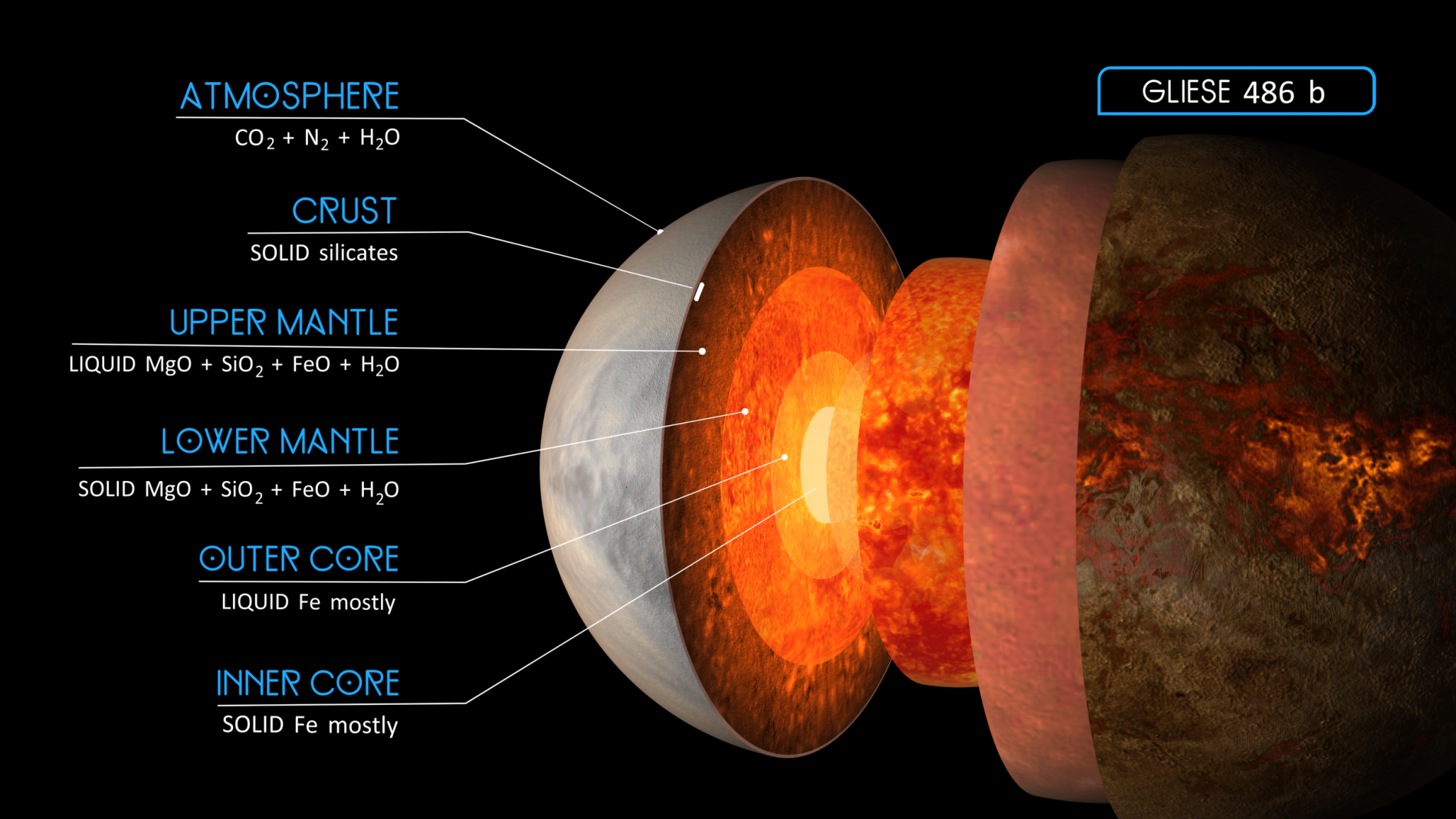The best studied terrestrial planet outside the Solar System
An international scientific team, with the participation of the Instituto de Astrofísica de Andalucía (IAA-CSIC), has measured with unprecedented precision the mass and radius of Gliese 486 b, a "super-Earth" type exoplanet, discovered in 2021 with the CARMENES instrument at Calar Alto observatory.
Its detailed study has allowed, for the first time, to make solid predictions about the structure and internal composition of a super-Earth.
Granada, 22 June 2022. An international team led by José A. Caballero, from the Centro de Astrobiología (CAB) CSIC-INTA, in collaboration with the IAA-CSIC, has modelled the interior of the exoplanet Gliese 486 b and estimated the relative sizes of its core (metallic) and mantle (rocky). "This is the first time that such a detailed study of the possible internal structure of an exoplanet has been carried out" says Pedro Amado, researcher at the IAA-CSIC and one of the authors of the study, which is published in the journal Astronomy & Astrophysics.
This analysis has been possible thanks to data obtained with instruments such as CHARA, CHEOPS, Hubble Space Telescope, MAROON-X, TESS and CARMENES. The team has also made predictions about the composition of the planet's atmosphere and its detectability with the James Webb Space Telescope, which will soon point its segmented mirror at the planetary system.
Precisely, Gliese 486 b was discovered by the German-Spanish consortium CARMENES in 2021 thanks to the spectrograph of the same name located at the 3.5-metre telescope of the Calar Alto Observatory (Almería). This planet, orbiting a red dwarf star only 26 light-years away, can now be considered as the best-studied rocky planet outside our Solar System. "This exhaustive characterisation has been carried out thanks to a wide range of instruments and telescopes located both on the ground and in space, including high-resolution spectroscopy data obtained with the CARMENES instrument at Calar Alto Observatory and photometry data obtained with the telescopes at Sierra Nevada Observatory" says Eloy Rodriguez, another of the authors of the paper and researcher at IAA-CSIC,
For Caballero, "Gliese 486 b has become the Rosetta Stone of exoplanetology: in the Solar System, we have the telluric planets Mercury, Venus, Earth and Mars. Now, the fifth best-studied terrestrial planet in the Universe is Gliese 486 b".

Model of the interior of Gliese 486 b. Credit: José A. Caballero, Javier Bollaín and Carlos Gallego (CAB)
"Probably the most important results behind our work are not the values themselves, but the opportunities they offer for future studies," says Esther González-Álvarez, an astronomer at the CAB and another of the authors of the paper. González-Álvarez refers to future studies, such as the formation of planetary magnetic fields in the outer core with liquid metals, since Gliese 486 b seems to have one like our Earth. These magnetic fields may act as a shield against stellar host storms and prevent erosion of the atmosphere. Because of its precise and accurate characterisation, Gliese 486 b may become the first (and so far only) exoplanet where we can consider this future research.
The first exoplanet around a star similar to our Sun, 51 Pegasi b, was discovered in 1995. Since then, every year, the astronomical community discovers exoplanets that are less and less massive, closer and closer, and more and more similar to Earth. For Pedro Amado, "the combination of data from space missions and ground-based instrumentation such as CARMENES is an exceptional way to better characterise rocky exoplanets and compare them with those in the solar system".
Model of the interior of Gliese 486 b. Credit: José A. Caballero, Javier Bollaín and Carlos Gallego (CAB)
Pedro Amado - pja[at]iaa.es
José Antonio Caballero - caballero[at]cab.inta-csic.es
Instituto de Astrofísica de Andalucía (IAA-CSIC)
Unidad de Divulgación y Comunicación
Silbia López de Lacalle - sll[arroba]iaa.es - 958230676
https://www.iaa.csic.es
https://divulgacion.iaa.csic.es

